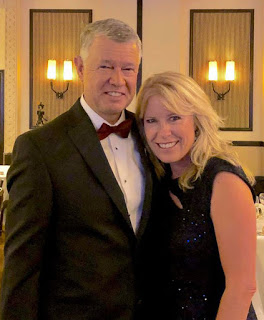
The greater roadrunner, a member of the cuckoo family, is one of the most iconic birds of New Mexico—so much so, it is the official state bird! These wily little birds can be found all over the southwestern United States and into central Mexico. At White Sands National Park, they are often seen running around the visitor center or through the desert scrub, but they also live in brushy areas and woodlands.
Just like in cartoons, roadrunners love to run and can reach speeds of up to 20 miles per hour. They can fly for short distances but prefer to remain on the ground where they hunt for prey. In fact, roadrunners are very fierce opportunistic predators. They will eat carrion as well as pretty much anything they can catch, including mice, lizards, scorpions, rattlesnakes, and other birds.
In terms of appearance, there is little sexual dimorphism between males and females. Both grow up to 23 inches in length and look primarily the same, each covered in brown feathers with streaks of white on the body and wings, a white edging along the tail, and a patch of red and blue skin around the eyes.The characteristic shaggy crest on their heads can be raised or lowered at will.They have long grey legs and big feet with four toes—two pointing forward and two pointing backward.This gives them a rather distinctive X-shaped footprint. Both adults and young roadrunners have black skin beneath their feathers that helps them warm up on cool days.
Roadrunners are often mistaken for mourning doves due to their cooing call.The call is usually six to eight "coos" long and descends in pitch with each "coo." The bird begins its song with its head pointed towards the ground, raising it successively higher as the pitch gets lower until finally, its beak is pointed towards the sky with the last coo.
Throughout most of the year, roadrunners are solitary birds, only seeking out others during mating season. It is thought that roadrunners mate for life, seeking out the same mate every year. Females lay one to two clutches per year, each clutch consisting of two to six white eggs. Nests are shallow cups approximately four inches deep. They are built in in low trees, shrubs, and cacti using any materials the pair can find. Both parents will take turns incubating the eggs for approximately 18 to 20 days before they hatch. It takes roughly 16-18 days for the young birds to fledge after hatching, and they are able to catch their own meals after about three to four weeks of age.
This is the easiest breakfast casserole you'll ever make. No, really. Thanks to some shortcut frozen ingredients, this Make-Ahead Breakfast Casserole can be put together in no time. And since it's a make-ahead casserole, you can make it an hour in advance or even a day in advance!
- 6 frozen waffles, cut into 1-inch cubes
- 1 (9.6-ounce) package frozen sausage crumbles, thawed
- 1 cup shredded sharp Cheddar cheese, divided
- 6 eggs
- 1 1/4 cups milk
- 1/2 teaspoon salt
- maple syrup (optional)
- Coat an 8-inch square baking dish with cooking spray. Layer half of waffles on bottom of prepared dish. Top with half of sausage crumbles and 1/2 cup of cheese. Repeat layer.
- In a medium bowl, whisk eggs, milk, and salt until well combined. Pour egg mixture evenly over waffle mixture.
- Cover baking dish with plastic wrap. Refrigerate at least 1 hour, or overnight.
- Before serving, preheat oven to 350º.
- Bake 45 to 50 minutes, or until eggs are set in center. Drizzle with syrup and serve.

The exact origin of the cookie is unknown. However, the Dutch believe that pfeffernusse (or pepernoten) are linked to the feast of Sinterklaas, which is celebrated on December 5 in the Netherlands and December 6 in Germany and Belgium. This holiday is when children receive gifts from St. Nicholas, who is partially the inspiration for the Santa Claus tradition.









